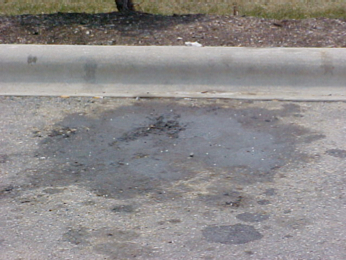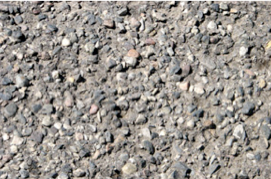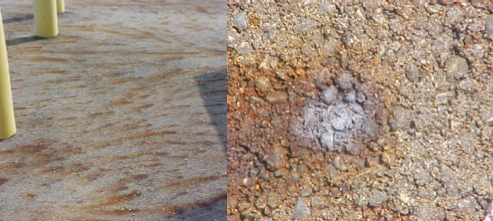Over the years, I have concluded that the majority of sealcoating failures e.g. premature wear, flaking, peeling, etc, happen due to the bonding problems of the sealcoating to the pavement surface. Sealcoating manufacturers are meticulous in detailing the aspects of material and surface preparation prior to sealcoating, and urging the applicators to comply with them. Still it is not always possible to cover all the bases, considering the myriad of pavement types, age and the condition. In this article we will review the causative factors and remedies that are practiced as good sealcoating practices.
The most commonly used direction in the detailed application specification is the statement that the pavement shall be clean, free of dirt and debris, free of surface defects, and suitable for sealcoating.
A. For the proper bonding of the sealcoating, it is essential that the surface be cleaned as thoroughly as possible to remove dirt and debris. The adage that “a coating is as good as the surface that it is applied on” holds true for all coatings. If the surface is not clean the coating will not bond and with time and usage it will flake or peel off. The extent of cleaning of the pavement will depend upon its condition, simple air blowing or more involved scraping, wire brushing, air blowing or pressure washing.
For more information, you can read the Asphalt Surface Preparation Tools & Equipment guide.
B. The statement that pavement shall be free from surface defects instructs the applicator to repair cracks, surface alligatoring, patching and treating oils spots. Sealcoatings are not repair products; they are coatings to protect and preserve the surface. The applicator must ascertain the type of cracks he is dealing with; non-working cracks shall be filled while working cracks sealed. Similarly, the alligatored surfaces shall be thoroughly examined for any signs of the base failure.
Tan/white streaks along the cracks, in alligatored areas surely indicate base failure. Recently I came across an instance where the water was actively pumping from the base on the top of the freshly sealcoated surface. Also I saw many dried white streaks in the same area. Had I not been on the job, I am sure that the property owner would have blamed the sealer. The moral of the story is analyze and investigate, prior to reaching conclusions. It is up to you how you settle the complaint with your customer.

D. The suitability of the pavement means besides other requirements, that pavement has aged sufficiently to rid off the surface oils prior to sealcoating. According to the industry practices (PCTC Specs.), the freshly laid asphalt surface shall be allowed to age for min.90 days @ >70 º F, and the pavement tested by performing a water-break-free test, by casting a gallon of clean water over the surface. The water should sheet out without crawling or showing oil rings. If these conditions are met, you are ready to sealcoat.
E. For old highly oxidized (and powdery) but sound pavements, sealcoating involves removing the surface dust, repairing surface defects (crack filling, patching), priming with a coat of diluted sealer or a tack coat and finally sealcoating.
Special Challenges
In the following sections we will describe some pavement types and conditions that are generally not described in the manufacturer’s literature.

Remedy – Prime the exists, entrances and the driving lanes with a thin coat of a specialty primer that is designed to penetrate into the “Polished” aggregate and provide a bonding surface for the sealer.

Remedy – The asphalt shall be primed with a specialty rust-inhibitive primer, prior to sealcoating.
C. Tree lined pavements may have a special problem where the sealcoating flakes off in spots. This type of failure is caused by tree sap, a fluid produced by trees. Sap is full of sugars and minerals and is generally oozed out during warm weather. Sap falls on the pavement and gets deposited in the pavement. The sugars being water soluble will continue to come through the sealed surface and lift the coating, if they were not removed prior to sealcoating.
Remedy – The pavement shall be preferably power washed to remove all sap from the profile.
Conclusion- sealcoating failures can be avoided by complying to specifications and paying special attention to pavement conditions and special situations. Your sealcoating manufacturer will assist you every step of the way. For more information, read the Asphalt Sealcoating Guide.



Great article with great information. Girish knows his stuff and contractors who pay attention to his suggestions will certainly end up with more problem-free jobs.